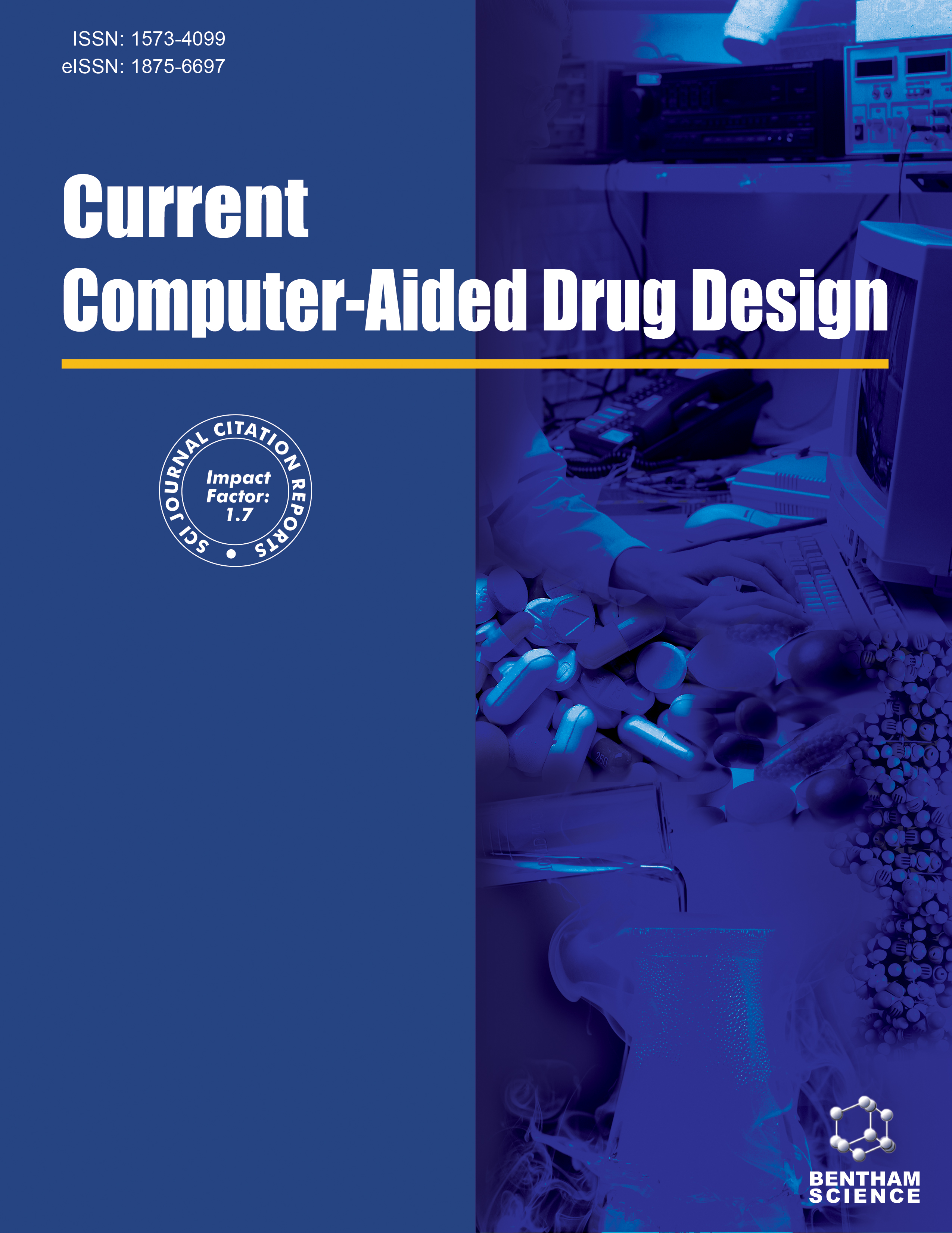- Home
- A-Z Publications
- Current Computer - Aided Drug Design
- Previous Issues
- Volume 5, Issue 2, 2009
Current Computer - Aided Drug Design - Volume 5, Issue 2, 2009
Volume 5, Issue 2, 2009
-
-
Edtiorial [Hot Topic: In Silico ADME/Tox Models: Progress and Challenges (Guest Editors: Robert K. DeLisle and David J. Diller)]
More LessAuthors: Robert K. DeLisle and David J. DillerOnce sufficient efficacy is obtained, the success or failure of a potential drug depends on its absorption, distribution, metabolism, excretion and toxicity (ADMET) characteristics. Since a tremendous amount of effort, for example high throughput screening and synthesis, has gone into finding bioactive molecules, ADMET issues are often the rate limiting factors in drug discovery programs. In response a significant amount of eff Read More
-
-
-
Computational Models for Central Nervous System Penetration
More LessAs the population of the elderly increases, there is a growing need for drugs to treat a variety of neurological diseases, such as Alzheimer's disease, Parkinson's disease, brain cancer, stroke, and infections in the central nervous system (CNS). Conversely, there is a need to identify brain penetration, and therefore potentially adverse events, from drugs acting on non-CNS targets. Late-stage clinical failures are costly in th Read More
-
-
-
Methods for Predicting the Affinity of Drugs and Drug-Like Compounds for Human Plasma Proteins: A Review
More LessAuthors: L. M. Hall, Lowell H. Hall and Lemont B. KierSignificant research has been conducted in the area of developing in silico methods for predicting the affinity of drugs and drug-like compounds for human plasma proteins. The free fraction of a compound associated with a given level of binding affinity has a significant impact on the pharmacokinetic profile of a drug and its metabolites. The development of quality plasma protein binding models has become an import Read More
-
-
-
In Silico hERG Modeling: Challenges and Progress
More LessThe first generation of in silico hERG models have focused on key driving forces for hERG/ligand binding: basicity and lipophilicity. While reducing basicity and lipophilicity are typically the first line approaches to eliminating hERG blocking activity, in many programs these are not feasible approaches because basicity and lipophilicity are frequently necessary for achieving good pharmacokinetics or primary target binding. T Read More
-
-
-
In Silico Prediction of Hepatotoxicity
More LessBy Ailan ChengLiver toxicity has been one of the major causes for drug attrition. It has caused discontinuation of preclinical and clinical studies, and withdrawals and black box warnings of marketed drugs. Drug-induced hepatotoxicity may lead to organ failure and, ultimately, patient death. Understandably, liver toxicity is one of the most important issues in the drug development cycle. In silico models based on chemical structure provide a c Read More
-
-
-
In Silico Studies in ADME/Tox: Caveat Emptor
More LessThere is great appeal, scientifically, financially and temporally, for the use of predictions in the drug metabolism and toxicology evaluations used, and in many instances, required, in chemical compound design and development. Indeed, there have been great strides in hardware and software development, as well as many scientific advances that have made predictions not only feasible but in many instances, accurate, when c Read More
-
-
-
Beyond the Model
More LessIt is not unusual for models developed to predict Absorption, Distribution, Metabolism, Elimination, and Toxicity (ADMET) as well as other endpoints to be nothing more than a black box, supplying only a numerical or categorical value by which users are expected to assess the goodness of a query compound. This type of result is, however, of little use in the overarching goal of developing better and safer drug compounds, th Read More
-
Volumes & issues
-
Volume 21 (2025)
-
Volume 20 (2024)
-
Volume 19 (2023)
-
Volume 18 (2022)
-
Volume 17 (2021)
-
Volume 16 (2020)
-
Volume 15 (2019)
-
Volume 14 (2018)
-
Volume 13 (2017)
-
Volume 12 (2016)
-
Volume 11 (2015)
-
Volume 10 (2014)
-
Volume 9 (2013)
-
Volume 8 (2012)
-
Volume 7 (2011)
-
Volume 6 (2010)
-
Volume 5 (2009)
-
Volume 4 (2008)
-
Volume 3 (2007)
-
Volume 2 (2006)
-
Volume 1 (2005)
Most Read This Month
Article
content/journals/cad
Journal
10
5
false
en


